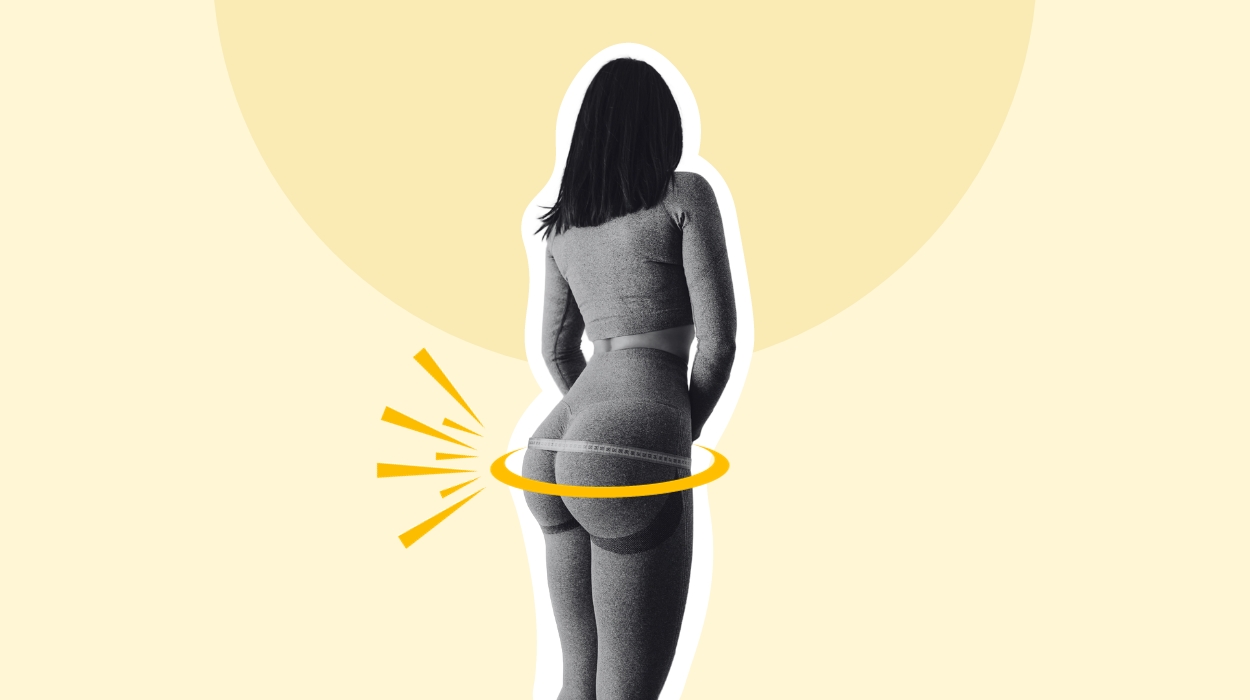Welcome to our comprehensive guide on unlocking the potential of your glute muscles and sculpting the butt of your dreams. Whether you’re aiming to build muscle mass, increase your butt size, or achieve a body fat 0/1 ratio, we’ve got you covered. Get ready to dive into the world of butt enhancement as we reveal the most effective exercises, nutrition tips, and secrets for activating your glute muscles[1] and promoting muscle growth. From targeted workouts and glute activation exercises to incorporating healthy fats and lean protein into your diet, we’ll help you develop a solid foundation for gluteal muscle development. Say goodbye to flat bottoms and hello to a bigger, rounder, and more toned butt. Let’s embark on this journey to transform your lower body and boost your confidence. It’s time to maximize your gluteus maximus and achieve the butt you’ve always desired.
Best Exercises For Glutes To Get A Big Butt
- Hip Thrusts
- Squats
- Lunges
- Glute Bridges
- Deadlifts
- Step-ups
- Bulgarian Split Squats
- Donkey Kicks
- Fire Hydrants
- Sumo Squats
- Romanian Deadlifts
- Glute Kickbacks
How To Get A Bigger Butt: Best Exercises
To promote glute growth, focus on exercises[2] like hip thrusts, squats, and lunges. Resistance training and weightlifting increase muscle hypertrophy in the glutes. Activate your glute muscles before workouts, and be consistent with butt and strength training for muscle growth. Techniques like single-leg deadlifts, glute bridges, and donkey kicks strengthen the glutes. Maintain proper form during lower body exercises. Consult a certified personal trainer for guidance and exercise correctness. Adapt exercises as needed and seek personalized advice from professionals, as everyone’s body is unique.
Hip Thrusts
This exercise targets the gluteal muscles and is excellent for building butt muscles and glute growth.
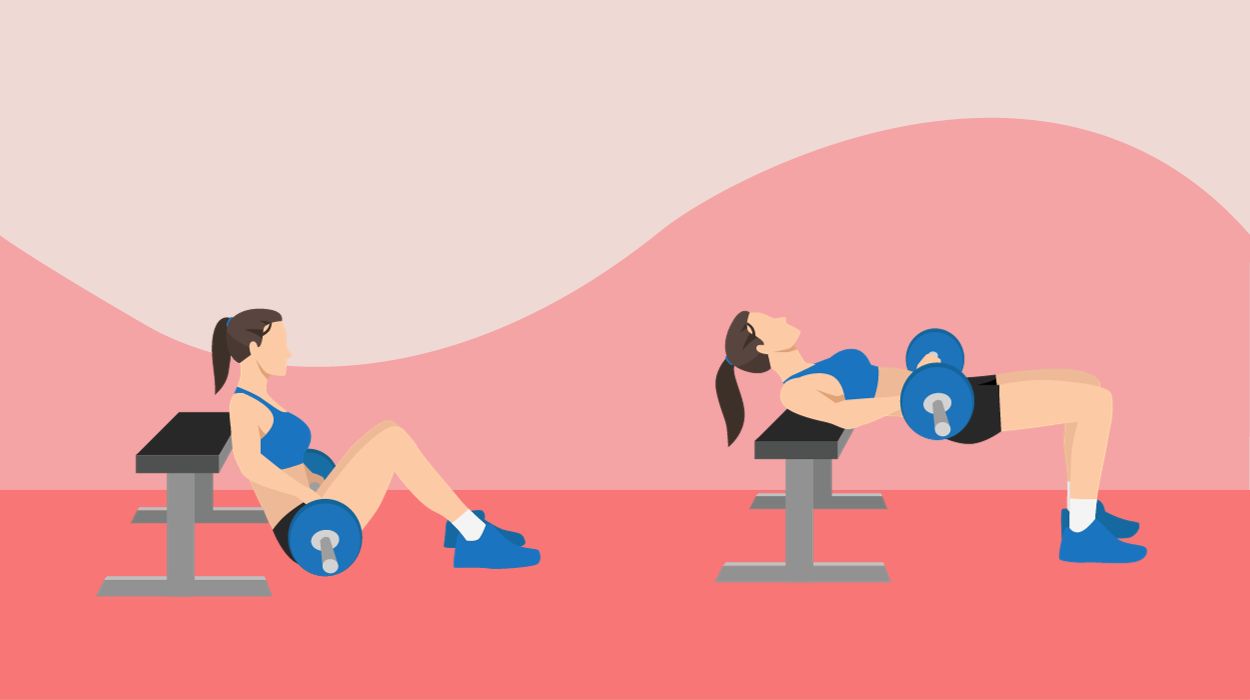
How to do:
- Begin by sitting on the ground with your upper back against a bench, knees bent, and feet planted flat on the floor, shoulder-width apart.
- Place a weighted barbell or pad over your hips and hold it with both hands to stabilize it.
- Push through your heels and lift your hips upward, squeezing your glutes, until your body forms a straight line from your knees to shoulders.
- Lower your hips back to the starting position in a controlled motion, maintaining tension in your glutes throughout the movement.
Tips:
- Stable Upper Body Position: Ensure your upper back is securely resting against a bench or stable surface, keeping your chin tucked to maintain spinal alignment.
- Proper Foot Placement: Position your feet flat on the floor, about hip-width apart, and close enough to your body to form a 90-degree angle at the knees when at the top of the movement.
- Maximize Glute Engagement: Drive through your heels and squeeze your glutes at the top of the movement, pausing briefly for maximum muscle activation.
Optimal Sets & Reps: three to four sets of 10 to 15 reps
Squats
Squats are a compound exercise that engages the glutes, quads, and hamstrings, promoting muscle growth and strength in the lower body.
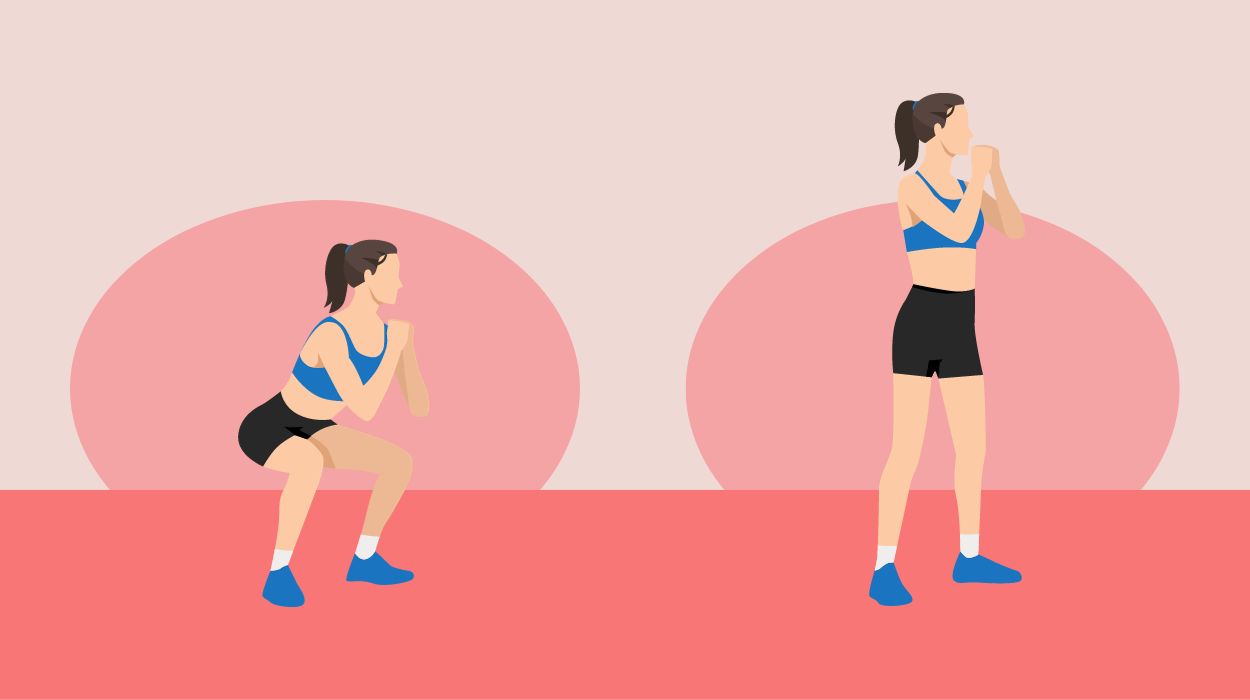
How to do:
- Stand with feet shoulder-width apart, toes slightly turned out, and hands at your sides or stretched forward.
- Keeping your back straight, bend your knees and hips to lower your body as if sitting back in a chair.
- Descend until your thighs are parallel to the floor, keeping your weight on your heels and knees aligned with your toes.
- Drive through your heels to return to the starting position, squeezing your glutes at the top of the movement.
Tips:
- Proper Foot Positioning: Keep your feet shoulder-width apart with toes slightly pointed outwards to ensure balance and proper alignment.
- Maintain Good Form: Keep your chest up and back straight, pushing your hips back and down as if sitting in a chair, ensuring your knees don’t go over your toes.
- Depth and Posture: Aim to lower yourself until your thighs are at least parallel to the floor, then drive back up through your heels, keeping your core engaged throughout.
Optimal Sets & Reps: three to five sets of eight to 12 reps
Lunges
Lunges work the glute muscles along with the quads and hamstrings, helping to sculpt and tone the butt area.
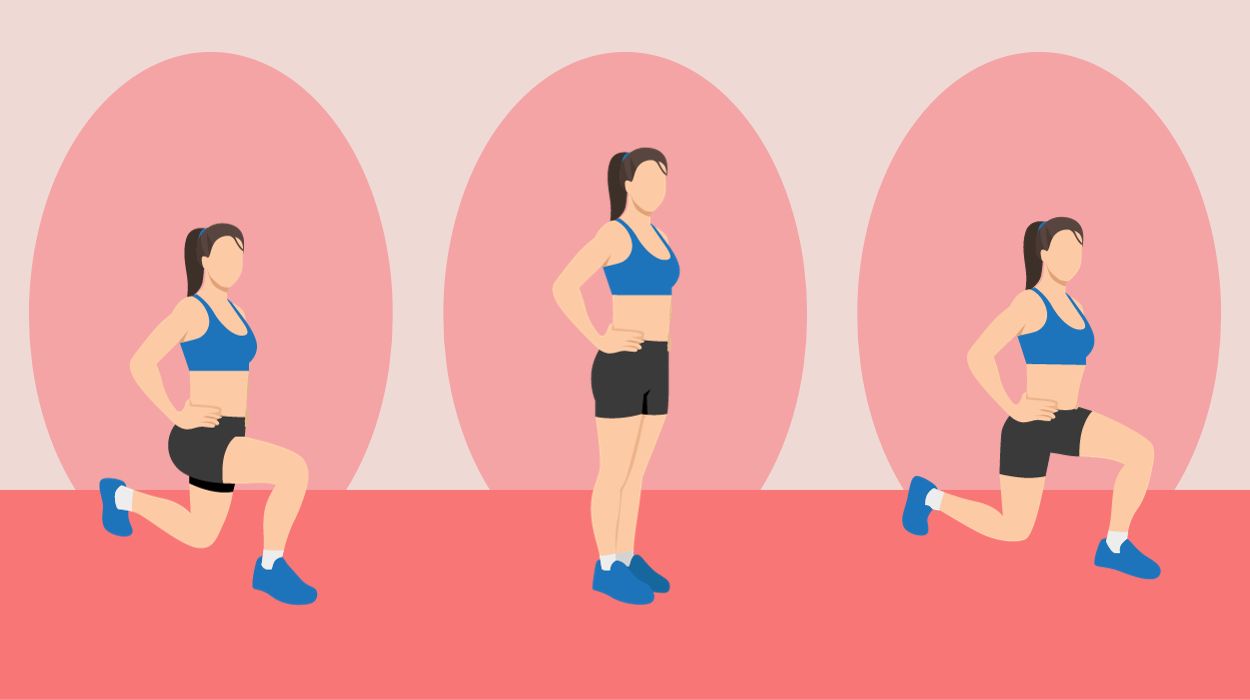
How to do:
- Stand upright with feet hip-width apart and hands on hips or extended for balance.
- Step forward with one leg, lowering your hips until both knees are bent at about 90 degrees.
- Push back up to the starting position and repeat with the opposite leg.
Tips:
- Proper Stance and Alignment: When stepping into the lunge, ensure your front knee is aligned with your ankle, not extending past your toes, and keep your back straight.
- Balanced Movement: Lower your body until both knees are bent at about 90 degrees, keeping the weight in the heel of your front foot, and avoid letting your back knee touch the ground.
- Control and Stability: Maintain a controlled, steady movement throughout the exercise, focusing on balance and stability, especially when pushing back to the starting position.
Optimal Sets & Reps: three to four sets of 10 to 15 reps
Glute Bridges
Glute bridges are specifically designed to activate and strengthen the glute muscles, contributing to a rounder and firmer butt.
How to do:
- Lie on your back with knees bent, feet flat on the floor, hip-width apart, and arms by your sides.
- Brace your core, then lift your hips off the floor, creating a straight line from knees to shoulders.
- Squeeze your glutes at the top of the movement, holding briefly for maximum engagement.
- Lower your hips back down slowly and repeat the motion for the desired number of reps.
Tips:
- Proper Hip Movement: Press through your heels to lift your hips, creating a straight line from your knees to shoulders at the top, and avoid overextending your back.
- Engage Your Core and Glutes: Keep your core engaged and squeeze your glutes at the top of the movement for maximum effectiveness.
- Controlled Motion: Raise and lower your hips in a slow and controlled manner, maintaining steady breathing throughout the exercise.
Optimal Sets & Reps: three to four sets of 12 to 15 reps
Deadlifts
Deadlifts engage the glutes, hamstrings, and lower back, promoting overall strength and muscle development in the posterior chain.
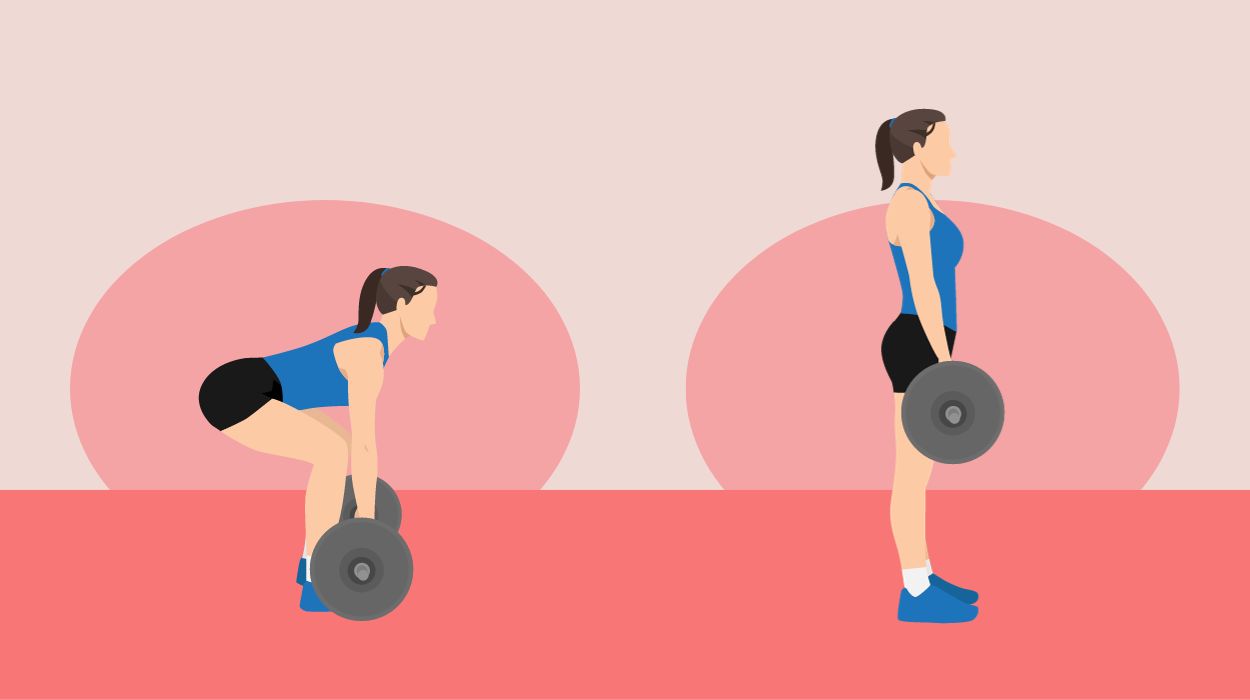
How to do:
- Stand with feet hip-width, gripping bar outside legs.
- Lift bar, straighten hips and knees, back straight.
- Lower bar to ground, maintaining flat back.
Tips:
- Correct Starting Position: Keeping your back straight and chest up.
- Proper Lifting Technique: Drive through your heels, keeping the bar close to your body as you lift, and extend your hips and knees simultaneously to stand up straight.
- Controlled Lowering: Hinge at the hips and bend your knees to lower the bar back to the ground, maintaining a flat back throughout the movement.
Optimal Sets & Reps: three to five sets of five to eight reps
Step-ups
Step-ups target the glutes, quads, and hamstrings, providing a challenging exercise to build muscle and shape the butt.
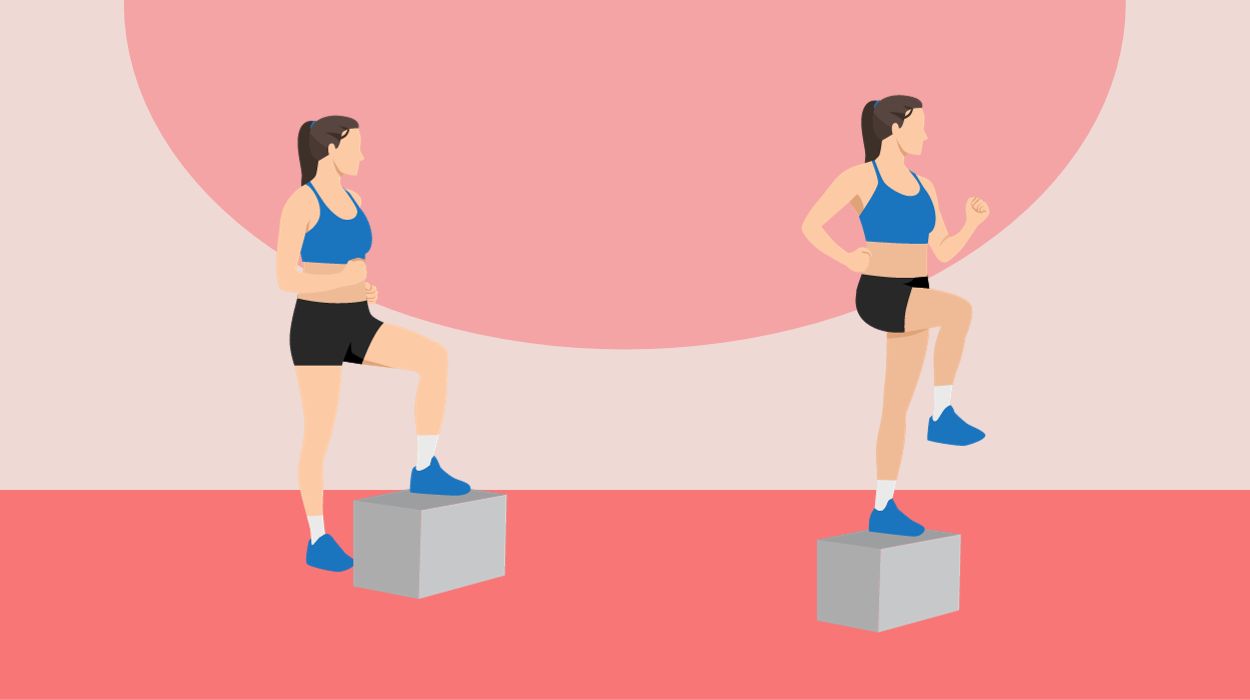
How to do:
- Stand facing a sturdy bench or step, feet hip-width apart.
- Step up onto the bench with one foot, pressing through your heel to lift your body.
- Bring the other foot up to meet the first, standing tall on the bench.
- Step down with the leading foot and follow with the other, returning to the starting position.
Tips:
- Proper Foot Placement: Step up onto the bench or platform with your entire foot, ensuring it’s firmly planted before lifting your body.
- Balanced Movement: Keep your chest up and core engaged as you step up, driving through the heel of the stepping foot to engage the glutes and thigh muscles.
- Controlled Descent: Lower yourself back down with control, maintaining balance and ensuring the non-stepping foot touches the ground gently.
Optimal Sets & Reps: three to four sets of 10 to 15 reps
Bulgarian Split Squats
This exercise targets the glute muscles and helps build muscle mass in the lower body. It also promotes balance and stability.
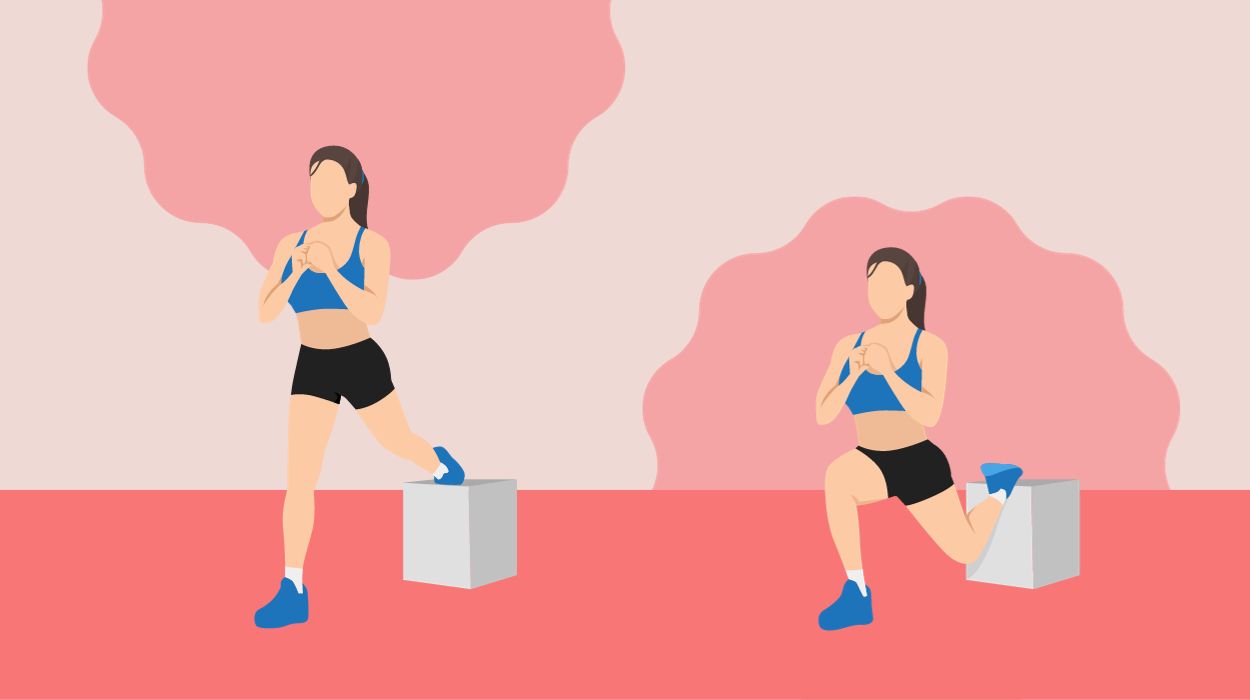
How to do:
- Stand about two feet in front of a bench and place one foot behind you on the bench.
- Lower your hips until your front thigh is nearly parallel to the floor, keeping your torso upright.
- Ensure your front knee stays above your ankle and doesn’t go past your toes.
- Push through your front heel to return to the starting position, then switch legs.
Tips:
- Proper Foot Placement: Place your front foot far enough forward to ensure your knee stays above your ankle when lowering.
- Balanced and Controlled Movement: Keep your torso upright and core engaged, lowering slowly until your front thigh is nearly parallel to the floor.
- Even Weight Distribution: Focus on distributing your weight evenly through the front heel and the ball of your back foot for stability.
Optimal Sets & Reps: three to four sets of eight to 12 reps
Donkey Kicks
Donkey kicks are a great exercise for targeting the glute muscles and promoting muscle growth. They can be done with body weight or by adding resistance using ankle weights or resistance bands.
How to do:
- Start on all fours, hands under shoulders, knees under hips.
- Lift one leg, knee bent, foot pushing towards the ceiling.
- Lower leg slowly, maintaining glute engagement, and repeat.
Tips:
- Proper Starting Position: Keeping your back flat and core engaged.
- Focused Movement: Lift one leg with the knee bent at 90 degrees, push your foot towards the ceiling, and squeeze your glutes at the top without arching your back.
- Controlled Pace: Lower your leg back to the starting position in a controlled manner, maintaining tension in the glutes throughout the movement.
Optimal Sets & Reps: three to four sets of 12 to 15 reps
Fire Hydrants
Fire hydrants specifically target the glute muscles and can help improve hip mobility and strengthen the outer hips.
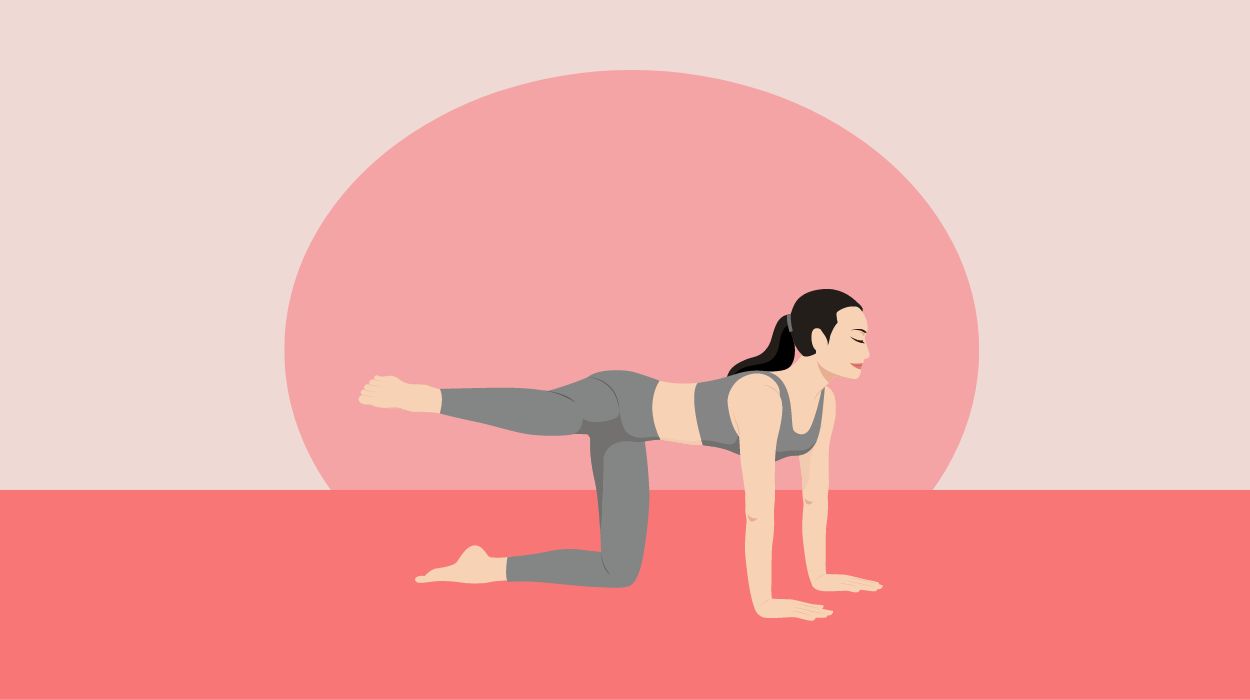
How to do:
- Start on all fours, hands under shoulders, knees under hips.
- Lift one knee out to the side, keeping it bent.
- Lower knee back, repeat movement, then switch legs.
Tips:
- Maintain Stable Core: Keep your core engaged and back flat to avoid rocking your body as you lift your leg.
- Controlled Leg Movement: Lift your leg to the side, keeping the knee bent, and raise it as high as comfortably possible without straining.
- Even Weight Distribution: Ensure even weight distribution on your supporting hands and knee to maintain balance and proper form.
Optimal Sets & Reps: three to four sets of 12 to 15 reps
Sumo Squats
Sumo squats target the glutes, inner thighs, and quads. By adopting a wider stance and turning the toes outward, this exercise provides a unique stimulus for the glute muscles.
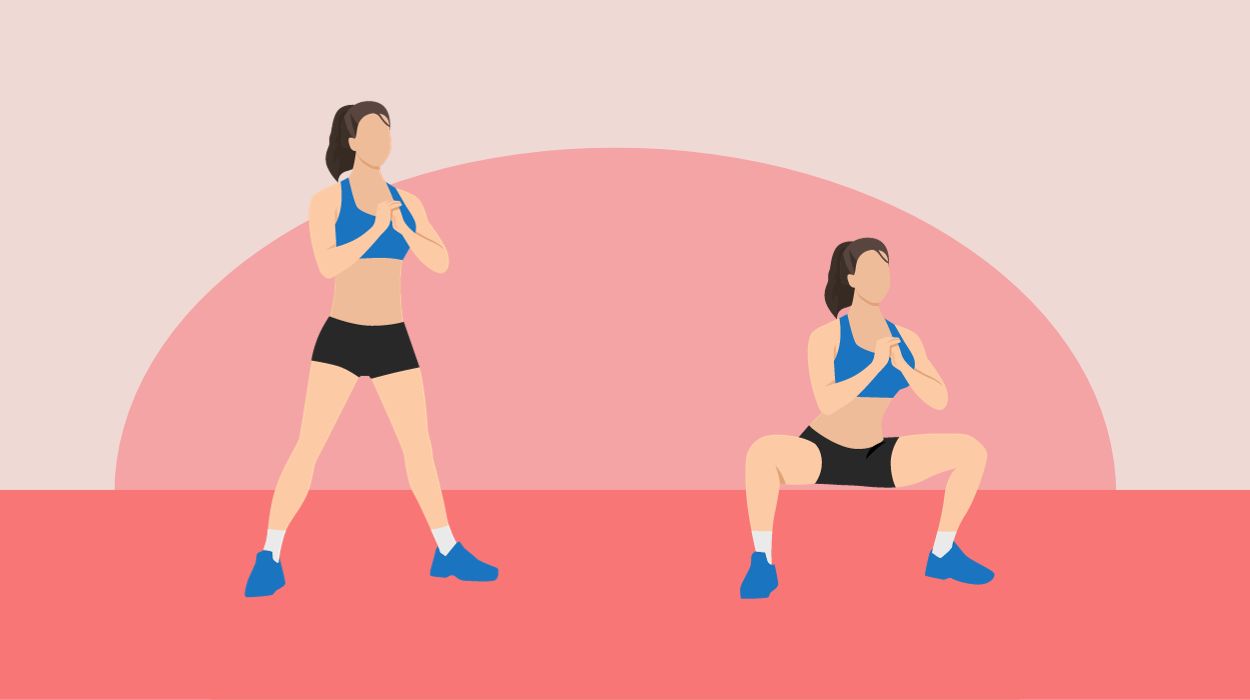
How to do:
- Stand with feet wider than shoulders, toes pointed outward.
- Bend knees, lower into a squat, keeping back straight.
- Push through heels to stand up, squeezing glutes.
Tips:
- Wide Stance and Toe Position: Stand with your feet wider than shoulder-width apart, toes pointing outwards at a 45-degree angle.
- Proper Squat Depth and Posture: Lower your body by bending your knees, keeping your back straight and chest up, until your thighs are parallel to the floor.
- Engage Your Inner Thighs and Glutes: Focus on engaging your inner thighs and glutes, especially as you push back up to the starting position.
Optimal Sets & Reps: three to four sets of 10 to 15 reps
Romanian Deadlifts
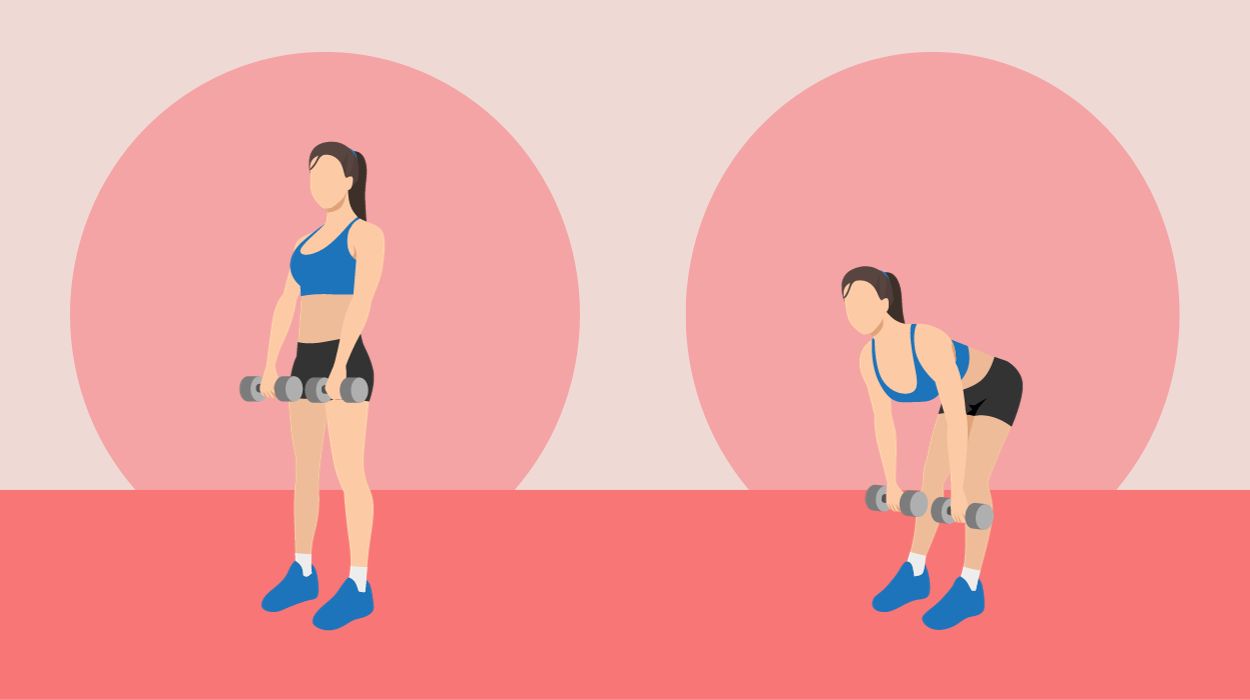
Romanian deadlifts primarily work the hamstrings and glutes, helping to build muscle mass and improve strength in the posterior chain.
How to do:
- Stand with feet hip-width, holding weights in front of thighs.
- Hinge at hips, slight knee bend, lower weights near shins.
- Drive hips forward to stand, keeping back flat throughout.
Tips:
- Maintain a Straight Back: Keep your back flat and core engaged throughout the movement to protect your spine and effectively target the hamstrings and glutes.
- Controlled Hinge and Movement: Hinge at the hips with a slight bend in the knees, lowering the weight close to your legs, and feel the stretch in your hamstrings before returning to the start position.
- Focus on Hip Movement: Drive the movement through your hips, both when lowering and raising the weight, to maximize the engagement of the targeted muscles.
Optimal Sets & Reps: three to four sets of eight to 12 reps
Glute Kickbacks
Glute kickbacks isolate and activate the glute muscles, aiding in muscle growth and toning of the butt area.
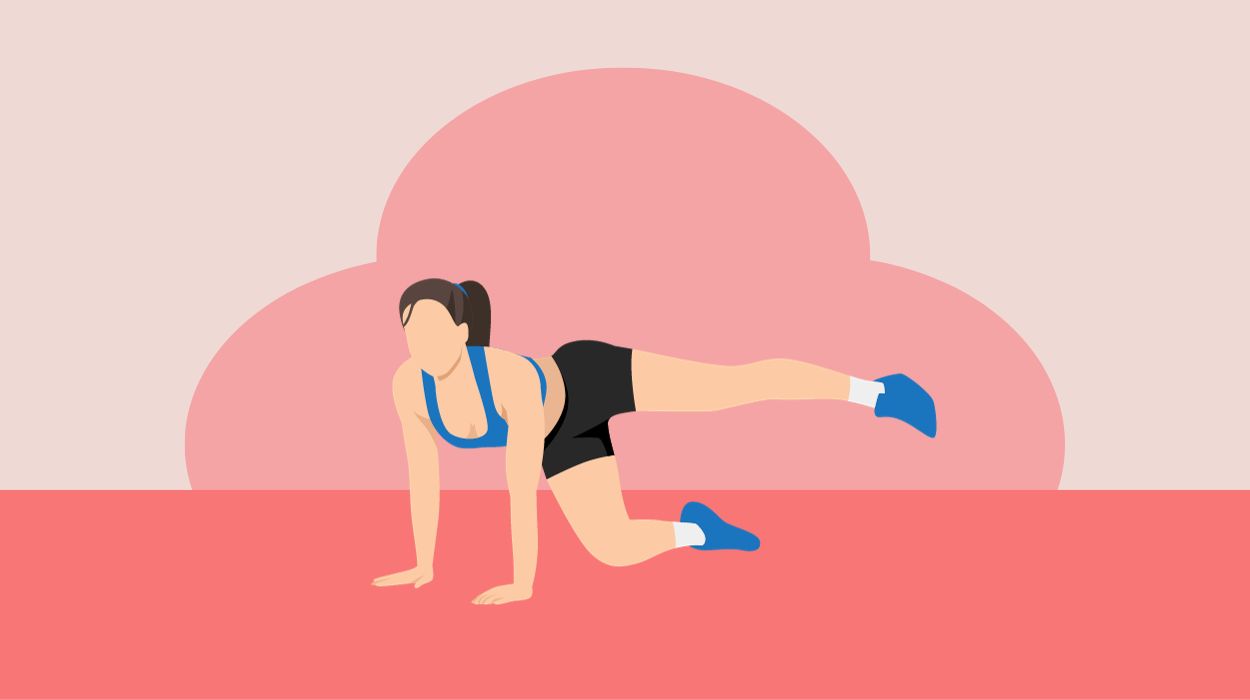
How to do:
- Start on all fours, hands under shoulders, knees under hips.
- Lift one leg back, knee bent, squeezing glutes at the top.
- Lower leg slowly, maintaining control; repeat, then switch legs.
Tips:
- Proper Body Alignment: Ensuring your back is flat and core-engaged to avoid arching your spine.
- Focused Leg Movement: Lift one leg back and up, keeping the knee bent at 90 degrees, and squeeze your glutes at the top without overextending your back.
- Controlled Pace: Perform the movement in a controlled manner, avoiding momentum, to maintain tension in the glutes throughout the exercise.
Optimal Sets & Reps: three to four sets of 12 to 15 reps
Best Glutes Workout Routine
| Exercise | Sets x Reps |
| Hip Thrusts | three to four x 10 to 15 |
| Squats | three to five x eight to 12 |
| Lunges | three to four x 10 to 15 |
| Glute Bridges | three to four x 12 to 15 |
| Deadlifts | three to five x five to eight |
| Step-ups | three to four x 10 to 15 |
| Bulgarian Split Squats | three to four x eight to 12 |
| Donkey Kicks | three to four x 12 to 15 |
| Fire Hydrants | three to four x 12 to 15 |
| Sumo Squats | three to four x 10 to 15 |
| Romanian Deadlifts | three to four x eight to 12 |
| Glute Kickbacks | three to four x 12 to 15 |
Incorporating these exercises[3] into your workout routine will help you effectively target and build your butt muscles. Remember to perform them with proper form and gradually increase the intensity and weight as you progress. Consulting with a certified personal trainer can provide further guidance on exercise selection and technique.
Foods To Eat To Get A Bigger Butt
- Lean Protein: Include sources like chicken, turkey, lean beef, fish, tofu, and Greek yogurt to support muscle growth and butt development.
- Healthy Fats: Incorporate foods rich in healthy fats like avocados, nuts, seeds, and olive oil. These provide energy and support hormone production for glute muscle growth.
- Complex Carbohydrates: Opt for whole grains, quinoa, brown rice, and oats to fuel your workouts and provide sustained energy for muscle development.
- Leafy Greens: Include spinach, kale, and broccoli, which are packed with vitamins, minerals, and antioxidants for overall health and muscle function.
- Legumes and Beans: Lentils, chickpeas, and black beans are excellent sources of plant-based protein and fiber, supporting muscle growth and digestion.
- Hydration: Drink plenty of water throughout the day to stay hydrated, aid nutrient absorption, and support overall bodily functions.
Remember, a well-rounded diet[4] that meets your caloric and macronutrient needs is crucial. Consulting with a registered dietitian or nutritionist can provide personalized guidance and meal planning tailored to your specific goals and dietary requirements.
Tips To Make Your Buttocks Look Bigger
- Wear high-waisted pants or skirts to accentuate your buttocks and create the illusion of a bigger butt.
- Choose bottoms with back pockets or embellishments to add volume and enhance the appearance of your buttocks.
- Opt for structured fabrics that provide lift and shape to make your buttocks look fuller.
- Consider using padded underwear or shapewear to instantly enhance the size and shape of your buttocks.
- Incorporate butt-enhancing exercises like squats and lunges into your fitness routine to build and tone your glute muscles.
- Experiment with contouring makeup techniques to create the appearance of a rounder and a more prominent butt.
- Embrace clothing styles with ruffles, pleats, or peplum details as they can add visual fullness to your buttocks.
- Maintain good posture to naturally highlight and accentuate the shape of your buttocks.
How To Grow Glutes Fast
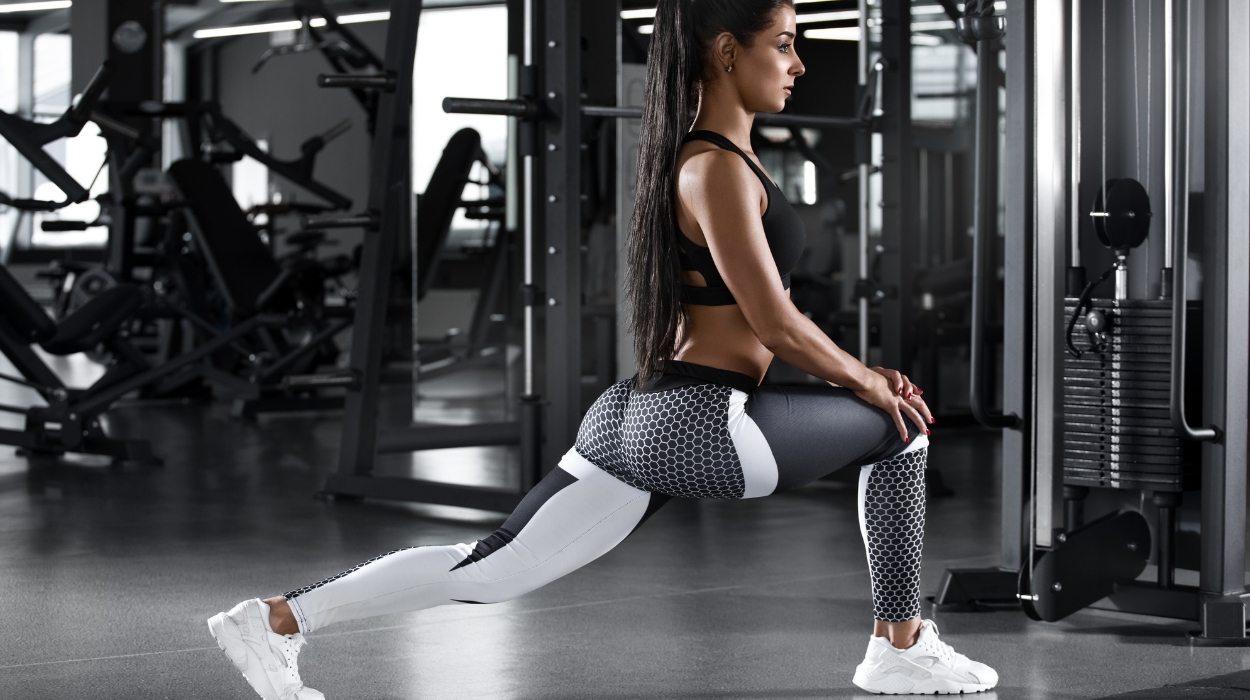
- Progressive Overload: Incorporate progressive overload into your glute workouts to challenge your muscles and stimulate growth for bigger glutes.
- Compound Exercises: Focus on compound exercises like squats, deadlifts, lunges, and hip thrusts. These exercises target multiple muscle groups, including the glutes, for faster growth and development.
- Heavy Weights: Train with heavy weights that allow you to perform 8-12 reps with proper form to create the necessary stimulus for glute muscle growth.
- Glute Activation: Prioritize glute activation exercises before your workouts to ensure your glutes are properly engaged during training sessions.
- High-Volume Training: Increase the volume of your glute workouts by performing more sets and reps. This can provide a greater stimulus for muscle growth.
- Proper Nutrition: Support muscle growth by consuming a balanced diet that includes sufficient protein, healthy fats, and complex carbohydrates.
- Rest and Recovery: Allow your glutes and muscles to recover by incorporating rest days into your routine. Rest is crucial for muscle repair and growth.
- Consistency: Be consistent with your glute-focused workouts and follow a structured training program. Aim for 2-3 glute workouts per week to maximize results.
By incorporating these tips into your fitness routine, you can optimize your efforts to get bigger glutes faster. Remember to listen to your body, be patient, and stay committed to your goals. Consulting with a certified personal trainer can provide additional guidance and support tailored to your specific needs.
Conclusion
if you’re looking to get bigger glutes, incorporating the right exercises, nutrition, and training strategies is key. You can effectively target the glute muscles by focusing on compound exercises like squats, deadlifts, lunges, and hip thrusts. Incorporating progressive overload, training with heavy weights, and increasing volume is vital to challenge your muscles and promote growth. Additionally, don’t forget about glute activation exercises to ensure your glutes are properly engaged during workouts. Proper nutrition, including foods rich in lean protein and healthy fats, can support muscle growth. Rest and recovery are essential for allowing your glutes to repair and grow. Consistency and commitment to your training program will yield the best results. By following these tips and staying dedicated, you can achieve the bigger glutes you desire and enhance your overall physique.
Frequently Asked Questions
To reduce body fat, maintain a balanced and healthy diet with lean protein and healthy fats. Incorporate glute-focused exercises like hip thrusts and single-leg deadlifts to build muscle and increase metabolic rate.
Butt-enhancing creams alone won’t significantly increase muscle mass. Focus on resistance training exercises like donkey kicks and glute bridges to target and develop the glute muscles.
You can achieve glute growth through bodyweight exercises like squats and lunges. However, lifting heavier weights with exercises like barbell hip thrusts can accelerate muscle development.
Before your workout, perform glute activation exercises, such as clamshells and fire hydrants, to engage the glute muscles. This helps ensure they are properly activated during your training session.
Yes, resistance training, which includes exercises like squats and deadlifts, is crucial for stimulating muscle growth in the glutes, hamstrings, and other lower body muscles.
Incorporating ankle weights into exercises like donkey kicks and glute bridges can increase resistance and intensity, promoting muscle growth in the glutes.
Glute activation exercises, such as glute bridges and clamshells, can help warm up and activate the glute muscles before your main workout. This enhances their engagement during exercises.
Absolutely! Exercises like squats, lunges, and hip thrusts can be performed without specialized equipment. However, adding resistance bands or ankle weights can intensify the workout and promote muscle growth.
 Expert's opinion
Expert's opinion